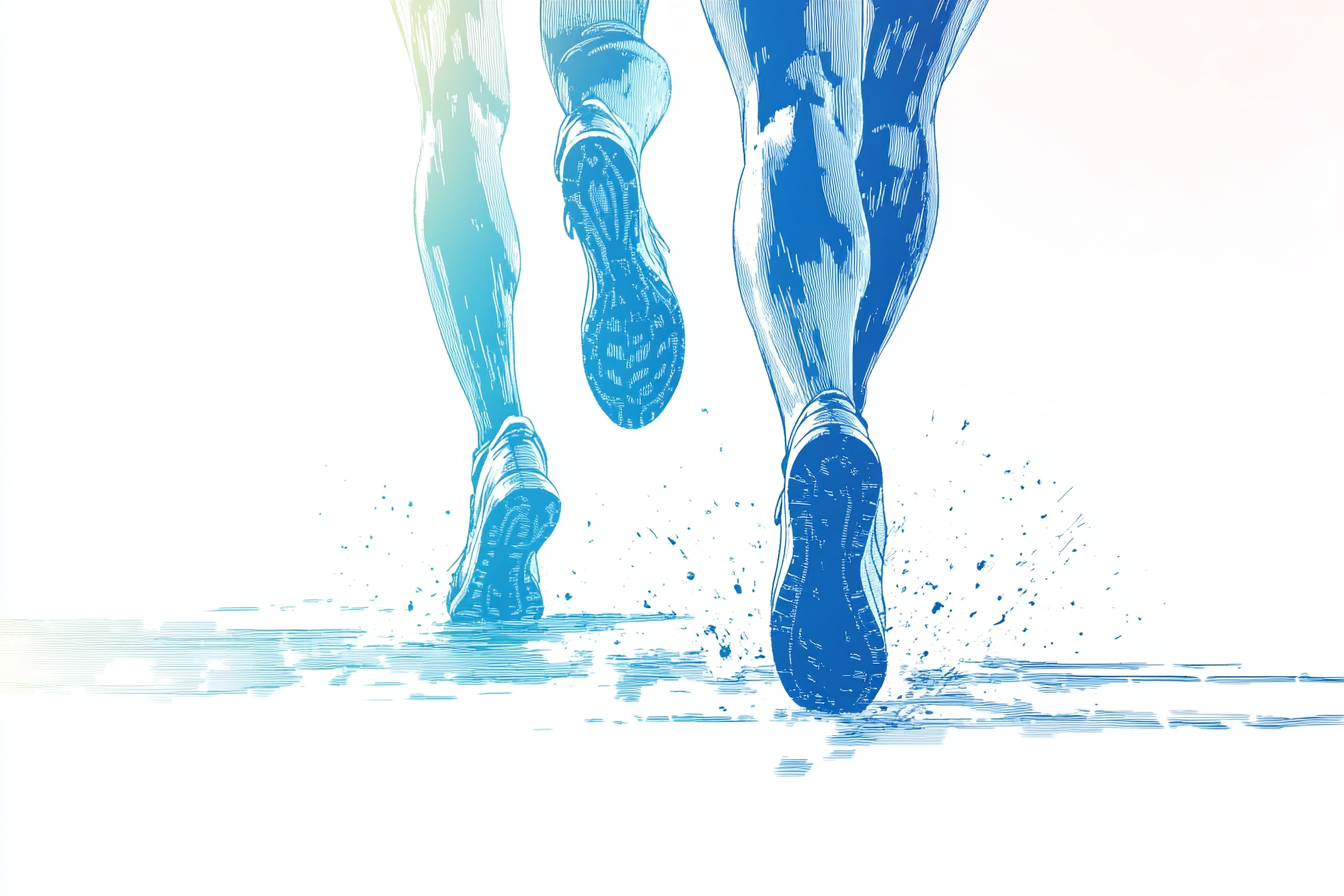Ever notice how detectives solve a crime from a single footprint? Your Saturday jog leaves the same sort of evidence—every squeak of rubber, every soft hiss of grass. Gait assessment is the CSI of movement, a motion analysis that can turn wobbly knees and creaky hips into functional mobility worthy of a superhero montage. By filming your walking patterns or running style, you expose the entire gait cycle—initial contact, swing phase, stance phases, even that tiny hip angle you never knew could betray your secret love of desk-chair slouching. So grab a pair of running shoes, open your camera app, and prepare to unravel the mystery of how your foot rolls from heel to toe.
Spark That Started the Sprint
Long before YouTube offered 0.25× playback, coaches in the 1970s duct-taped 8 mm cameras behind treadmills to spy on foot angle and step time. The footage looked like Bigfoot hoax reels, yet it sparked a revolution. Nowadays, TikTok runners flaunt slow-mo “shoe drops,” and every expo has a video gait analysis kiosk luring you with promises of injury-proof bliss. Why the obsession? Because normal gait is an endangered species: modern life shortens calf range of motion, weakens proximal muscle chains, and spawns a parade of over-striders who treat pavement like bubble wrap.
On the clinical side, surgeons quickly learned that measuring muscle strength and ankle dorsiflexion before knee operations predicted rehab success. Physical therapists discovered that tweaking foot rolls during contact phase reduced patellofemoral pain, while track coaches realized that the right cue—“flick the ankle like you’re scraping gum”—could unlock extra muscle power without adding mileage. The net effect? A booming ecosystem of apps, pods, and pressure plates promising mobility enhancement from couch to 5 K and beyond.
Proof in the Plantar
If the hype sounds too good, let science plead its case:
- Crush the Injury Odds – A two-week retraining program cut impact loading and slashed injury incidence by 62 percent in newbie runners.
- Boost Running Economy – Tweaking footwear-gait combos improved oxygen cost and shaved precious seconds off long-distance efforts.
- Future-Proof Against Falls – Wearable-sensor gait metrics predict fall risk in older adults, letting you intervene years before the calamity.
- Lab Accuracy Goes Garage-Band – Marker-less video systems like OpenPose now rival gold-standard marker rigs, putting clinical precision on your laptop.
Mini-Case: A “shuffle runner,” captured her running form at 240 fps. She saw limited ankle dorsiflexion, a hip drop of 12°, and a lopsided foot strike in the contact phase. After eight weeks of mini-band glute drills and daily calf-raise marathons, her muscle activity evened out, her swing phase shortened, and she shaved 45 seconds from her 5 K PB—proving that mobility enhancement doesn’t require a second mortgage.
Quick Anatomy of a Gait Cycle
| Phase | Key Clues You Can Catch on Video | Common Tweaks |
|---|---|---|
| Initial contact | Foot angle vs. ground; knee flexion | Shorten stride, aim mid-foot |
| Loading response | Foot rolls; muscle strength in quads | Increase cadence slightly |
| Mid-stance | Hip angle & pelvic drop | Single-leg squats for stability |
| Propulsion | Ankle dorsiflexion & muscle power | Calf raises, plyometrics |
| Swing phase | Range of motion & step time | Light drills: A-skips, butt kicks |
Personalized Pathways
Like fingerprints, no two movement patterns match. Your friend’s over-pronation may live happily ever after, while yours sparks Achilles mutiny. Instead of cookie-cutter shoe advice, conversational AI can sift your metrics and cook up bespoke drills. Try these prompts:
- “Here’s a slow-motion treadmill clip—identify my hip angle, foot rolls, and stance-phase duration, then suggest two drills to smooth them.”
- “My smartwatch recorded asymmetrical step time after mile six. Design a progressive muscle-strength workout that protects my proximal muscle chain.”
- “Compare morning and evening walking patterns; highlight fatigue-induced changes in range of motion and propose ankle-mobility tweaks.”
- “I’m choosing between two pairs of running shoes. Based on my gait assessment results—normal gait with mild supination—rank them for cushioning, stability, and weight.”
Suddenly the robot on your wrist becomes a pocket-sized biomechanist, translating nerdy graphs into plain English: “Less slouch, more bounce.”
Tweak Track Triumph
People Also Ask (and We Answer)
- What does a gait analysis tell you?
Everything from foot angle at initial contact to hip internal rotation, letting you spot inefficiencies before they turn into physical therapy invoices. - Can I do my own gait analysis?
Yes. Place your phone on a coffee-table tripod, run or walk past twice, then scrub the video frame-by-frame to clock swing phase timing and foot rolls. Bonus points for chalk markers on knees. - Is a gait analysis worth it?
If you value fewer injuries, better running form, and bragging rights, absolutely. If you enjoy limping at Monday meetings, skip it.
DIY Checklist
- Film from rear and side at ≥120 fps for clear contact-phase visibility.
- Mark ankles, knees, and hips with bright tape to audit motion analysis later.
- Count cadence; aim for 170-190 steps/min to curb over-stride.
- Flag asymmetries >5 percent in step time or stance phases.
- Re-film monthly to confirm mobility enhancement or shoe-switch success.
When those boxes tick, book a facility: high-speed cameras, force plates, EMG electrodes—plus techs in polo shirts who secretly name each pressure map after Marvel characters.
Stride Smarter Next Steps
Think of gait analysis like flossing—mundane, mildly awkward, guaranteed to save pain later. Whether you’re hunting a six-minute mile or just the morning train, each footfall writes a biomechanical diary entry. Read it often, tweak the story arc, and your future joints will high-five you (gently, with range-of-motion approved enthusiasm).
